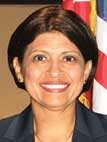
Greetings everyone! I hope you enjoyed a wonderful and blessed Easter. It sure did come early this year. Even so, Easter is one of my favorite holidays. It’s a time our entire family comes together to reflect on a triumphant event, eat plenty of good food. and enjoy the laughter of children as they hunt for colored eggs, candy, and other treats.
This month I’m sharing some history and the process surrounding the Hays County Parks and Open Space Plan our county just updated and approved. I hope this will be helpful to you when your county looks to develop or update a parks plan. For those who may not be familiar with Hays County, a portion of the county is located on the I-35 corridor between Austin and San Antonio. We have a population of 157,107, which is an increase of some 61 percent from the previous census. San Marcos is the county seat.
As a result of a 2001 voter-approved bond of $3.5 million for parks that supported 12 projects, Hays County, in 2002, approved its first Parks and Open Space Master Plan. The county worked diligently with different entities to leverage the $3.5 million to $15.3 million for a ratio of 1 to 4.42. In 2006, the Master Plan was updated, and in 2007 our voters approved bonds, $30 million of which were supported by a margin of greater than 2 to 1. This bond series supported 20 projects.
To stay current with the Texas Parks and Wildlife Department guidelines, which includes funding opportunities, parks master plans must be updated every five years, and a new plan is required every 10 years. During development of our plan, Hays County worked very hard to maintain an open process with significant public input and involvement. Our grants administrator, parks director, and parks board, guided by our consultant team, conducted five public meetings throughout the county along with stakeholder meetings and an online survey. A copy of our draft plan was posted to our website to receive additional public comment. The planning process began in early 2011 and took approximately one year to complete.
Our county’s goal was to develop a focused plan that outlines how to preserve our existing holdings and expand our parks and open space acreage to meet growing demand and enable all residents to enjoy county parks and open space. Community, environmental, and financial goals were developed along with an assessment of needs built around standards, demand, resource, and fiscal-based principles. A great deal of work went into this yearlong process, and 10 priorities were developed, which include river and creek access, trails, camping, festival space, and recreation and sports complexes.
Our commissioners court approved the plan to help guide our county in making decisions regarding parks and open space programs and facilities. Some lessons learned from past decisions include:
v have plenty of public involvement and input;
v communicate regularly with your consultant and county staff; and
v make certain the public understands funding limitations.
Just because you have a parks plan does not mean you have the funds to build.
Lastly, when our county determines when to ask voters to consider another bond for parks and open space, we will most likely be project-specific. It was very difficult to turn individuals and groups away knowing they had great projects, but the funds are limited, and we found it very difficult, at times, when determining how to prioritize. I hope this has been helpful.









